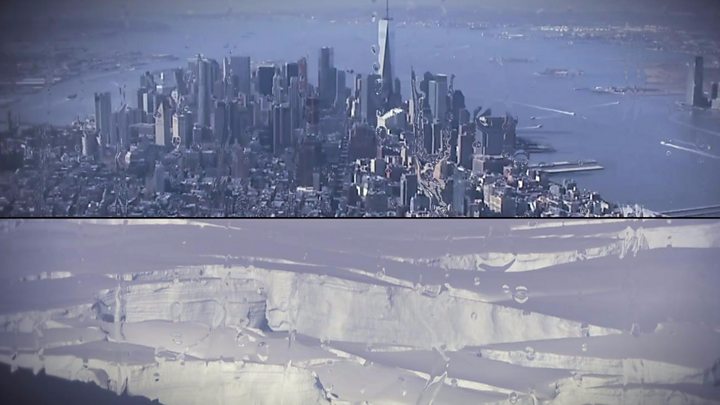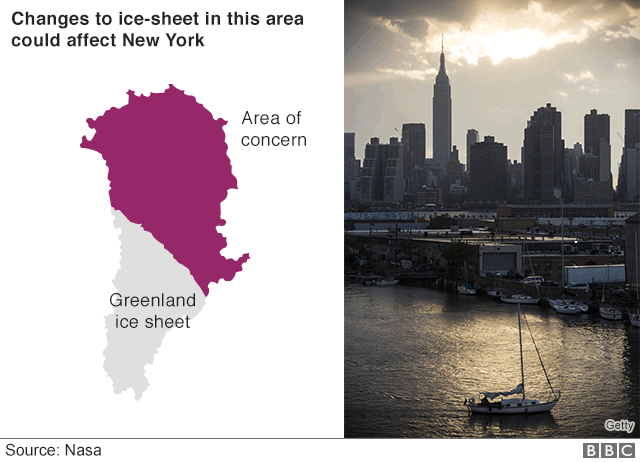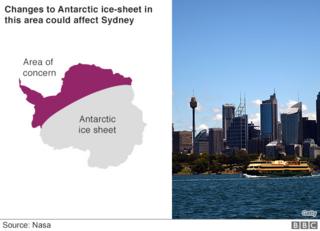
A forecasting tool reveals which cities will be affected as different portions of the ice sheet melt, say scientists.
It looks at the Earth’s spin and gravitational effects to predict how water will be “redistributed” globally.
“This provides, for each city, a picture of which glaciers, ice sheets, [and] ice caps are of specific importance,” say the researchers.
The tool has been developed by scientists at Nasa’s Jet Propulsion Laboratory in California.
Their findings are published in the journal Science Advances.
Senior scientist Dr Erik Ivins said: “As cities and countries attempt to build plans to mitigate flooding, they have to be thinking about 100 years in the future and they want to assess risk in the same way that insurance companies do.”
It suggests that in London sea-level rise could be significantly affected by changes in the north-western part of the Greenland ice sheet.

While for New York, the area of concern is the ice sheet’s entire northern and eastern portions.

Sea level changes in Sydney, the forecast shows, are “very strongly influenced” by ice changes that occur along the north-northeast and north-northwest coasts of Antarctica.

Dr Eric Larour, the lead developer on this project from Nasa’s Jet Propulsion Laboratory, explained that three key processes influenced the “sea-level fingerprint”, or pattern of sea-level change around the world.
The first is gravity.
“These [ice sheets] are huge masses that exert an attraction on the ocean,” said Dr Larour.
“When the ice shrinks, that attraction diminishes- and the sea will move away from that mass.”
As well as this “push-pull influence” of ice, the ground under a melting ice sheet expands vertically, having previously been compressed by the sheer weight of ice.
Wobbling planet
The last factor involves the rotation of the planet itself.
“You can think of the Earth as a spinning top,” said Dr Larour.
“As it spins it wobbles and as masses on its surface change, that wobble also changes.
“That, in turn, redistributes water around the Earth.”
By computing each of these factors into their calculations, the researchers were able to build their city-specific forecasting tool.
“We can compute the exact sensitivity – for a specific town – of a sea level to every ice mass in the world,” Dr Larour told BBC News.
“This gives you an idea, for your own city, of which glaciers, ice sheets and ice caps are of specific importance.”
Another of the team, Dr Surendra Adhikar, said: “People can be desperate to understand how these huge, complicated global processes impact on them.
“With this tool, they can see the impact on their own city.”
